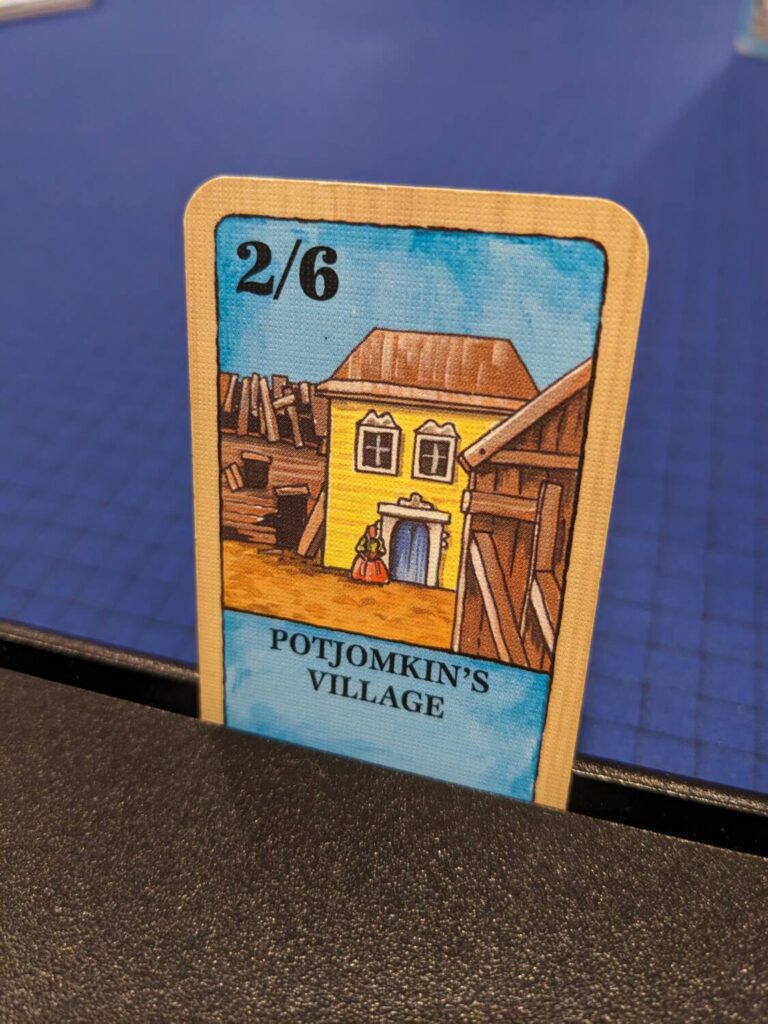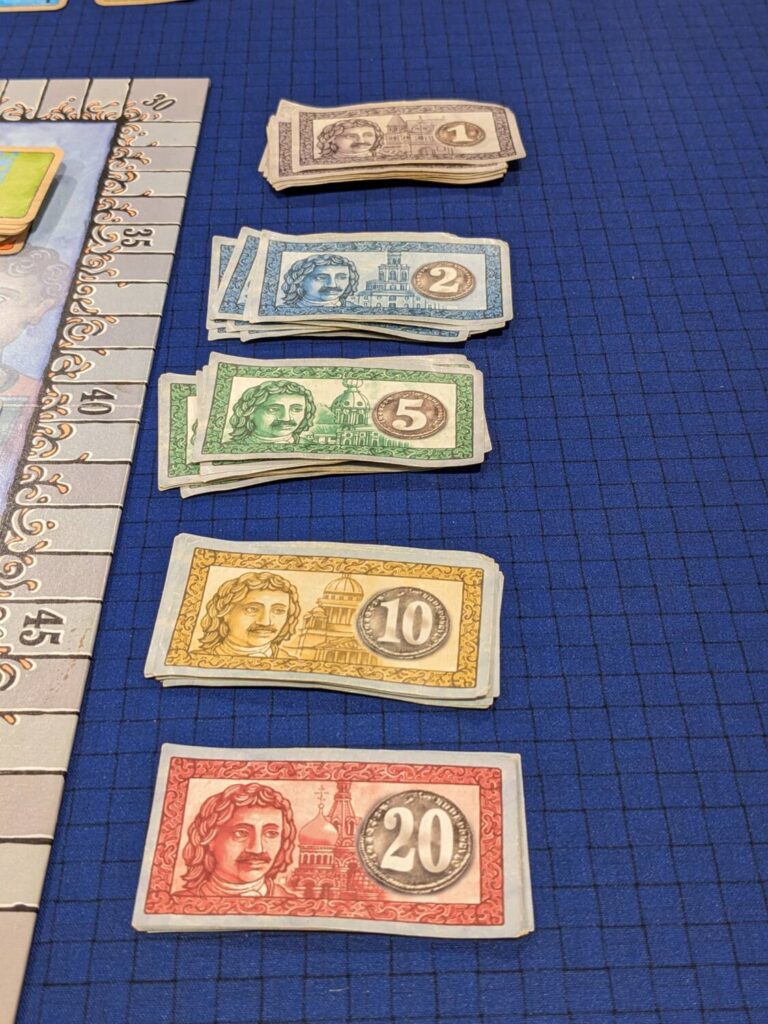The guys in my Wednesday gaming group started a push to play more of the old, dust-ridden games at the bottom and backs of our respective game closet shelves. The premise was simple: let’s try to remember why we keep all these old games when all we ever play now are the newest, shiniest things in shrink.
Right on the spot, the Dusty Euro Series was born, and I’ve enlisted multiple game groups to help me lead the charge on covering older games.
In order to share some of these experiences, I’ll be writing a piece from time to time about a game that is at least 10 years old that we haven’t already reviewed here at Meeple Mountain. In that way, these articles are not reviews. These pieces will not include a detailed rules explanation or a broad introduction to each game. All you get is what you need: my brief thoughts on what I think about each game right now, based on one or two fresh plays.

Saint Petersburg: What Is It?
Saint Petersburg (2004, first published by Hans im Glück and later published by Rio Grande Games) is a 2-4 player card drafting game with a very important element of set collection that plays over a series of rounds. Games end when one of the four decks (Craftsmen, Buildings, Aristocrats, and Exchange cards) runs out, signaling the final round of the game.
A fun note about the game’s “designer”, shared by my friends John and Beth (who have essentially become the backbone of this series thanks to their stellar collection of older classics). The game was designed by Bernd Brunnhofer, who in the Rio Grande (English language) copy of the game is listed as Michael Tummelhofer. Tummelhofer is a pen name for Brunnhofer as well as two other individuals who helped with development work on the game: Michael Bruinsma and Jay Tummelson, who also helped Brunnhofer with the game Stone Age.
I’ve done two separate plays of Saint Petersburg, and I still feel that its strengths outweigh its weaknesses. I can’t believe how quickly the game plays (both plays took an hour or less), and with its streamlined rules and even more streamlined market area, there’s not much a player needs to know to get rolling. I hate paper money, but due to the game’s rules (money is meant to be kept secret), the paper money works here and even the 20-year-old copy of the game I played has money that has held up exceptionally well. Turns are fast, scoring is straightforward, and there are almost no rules exceptions with the cards included in the base game.
Maybe the best and worst thing about Saint Petersburg? It seems like there is only one viable way to consistently win, a “dominant strategy” that became more clear during my second play of the game. That’s because game rounds in Saint Petersburg are always the same, and the number of unique cards in each of the four decks is limited.

In a round, players will have the chance to draft/buy Craftsmen cards first, and these cards are a sizable portion of the cash engine you’ll need to buy other cards during the game. Also—and this is true with each portion of a round in the game—each card type is scored after all players have finished buying or drafting cards that are added to a player’s hand. So, even during the first Craftsmen phase of the game, players will score those cards before moving to the Buildings phase, providing a cash infusion that will be used to buy more cards right away.
The dominant strategy? I’m not sure there’s anyone who could sell me on a different idea: buy a lot of Craftsmen cards, particularly if you can draft ones that match previously-played card types. If I’ve got multiple Fur Traders, each successive Fur Trader purchased will cost one ruble less for each other Fur Trader in my tableau.
So early on, I’m buying a ton of Craftsmen cards. I’m likely not going to buy many Building cards, although I could see a reason to draft one or two matching Building cards that could score well later in the game. Then, during the Aristocrat and Exchange card rounds, I’m buying as many unique Aristocrats as I can, because those both pay well and possibly provide a drip of victory points during the game. At the end of the game, having 8-10 unique Aristocrats could score 35-55 points, which in our most recent game ended up being half of the winning player’s score.
Going hard on Buildings early? Nope. That exhausts too much precious early-game capital that could be used to spike the money engine. And because unique cards are limited, any time you have the chance to buy an Aristocrat you don’t already have, you want to at least draft that Aristocrat card to play later, if not play it immediately. Duplicate Aristocrats can be used to discount the price of Aristocrats that appear in the Exchange deck, further assisting a player’s ability to have as many unique Aristocrats as possible.

Still…It’s Great
Saint Petersburg still worked for me during my most recent play, and I think it will likely shine brightest with other experienced players at the max player count. Even if everyone knows the best way to win, the competition for cards will always be intense and watching people fight over the best cards is always a good time.
Saint Petersburg has aged quite well, and it’s always good to have a one-hour, mid-weight Euro in your back pocket when you are doing a longer gaming session. The artwork by Doris Matthaus (who has over 200 credits to her name, including the original versions of games such as Carcassonne, El Grande, and Tigris & Euphrates) has a very distinct look and I love the Aristocrat portraits on those cards. The whole production is very tidy, including the six-page rule booklet and a box that slips nicely into a messenger bag.
Saint Petersburg is still a top 500 game on BGG, and for good reason. Give this a look if you haven’t tried it before, or try the online implementation on Yucata and Board Game Arena!










